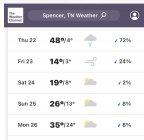I live in a Fifth wheel more than my home and I’ve been through upstate NY, Utah and Chicago winters down to -28 actual temp.
I’d say if you are leaving for a few days, blow out your lines with air, or pump antifreeze through out. I used air last week in mine.
Don’t let the water run, it can freeze in your drain pipe, fill your tank and overflow inside.
Keep your flexible drain line disconnected when the temperature stays below freezing all day, I hang mine over something so all the water drains out both ends completely. They will break in half when you try to move them when frozen solid.
I run a small heater close to the water lines in the storage area for extra insurance, and leave cabinet doors partially open so warm air can reach pipes.
Even if you have a four seasons camper, run the furnace and don’t heat with electric to much. My RV heats easy with a couple small electric heaters down to 15-20 degrees. The problem is that without running my furnace, I’m not getting enough heat into the under belly. I also cut a slice into the flex duct near my water lines to allow extra heat in that area.
If you have an enclosed docking area for your water and cable connection, burn a light in that compartment, it will make enough heat to not let the water freeze at the connector. I also buy heat tapes a little longer than my hose that allow a few extra wraps around the piping on each end.
Try to dump your tanks when it gets above freezing, it’s easier on the valves and the cables that move them. When it stays below freezing just be easy with them. I’ve watched weather forecast before and judged how long of showers I could take. Navy shower when cold, so you don’t have to dump as often.
Underpinned is best if your not moving much. The snap ones are nice but expensive and they take up a lot space when not in use. So far I’ve not underpinned mine even in extreme weather. The last two years I have built small foam boxes around my drain pipe, with a door and a light inside to keep it unfrozen. My tanks are heated with 120v electric pads on the tanks. Lots of dealers mislead buyers by saying tanks are heated, when they are only heated by the furnace running, these are not truly heated tanks.
A 100 lb propane tank is handy to have also. During my winter in Chicago, I ran through a 30 lb tank in a day and half, I kept 3 tanks and filled one nearly every day at lunch time.
Winter camping can be a challenge, but it can be done. Most of these lessons I learned the hard way.
There’s nothing like working on plumbing and being wet when it’s under 20 degrees lol.
I hope one of these tips saves you from wet cold hands.












